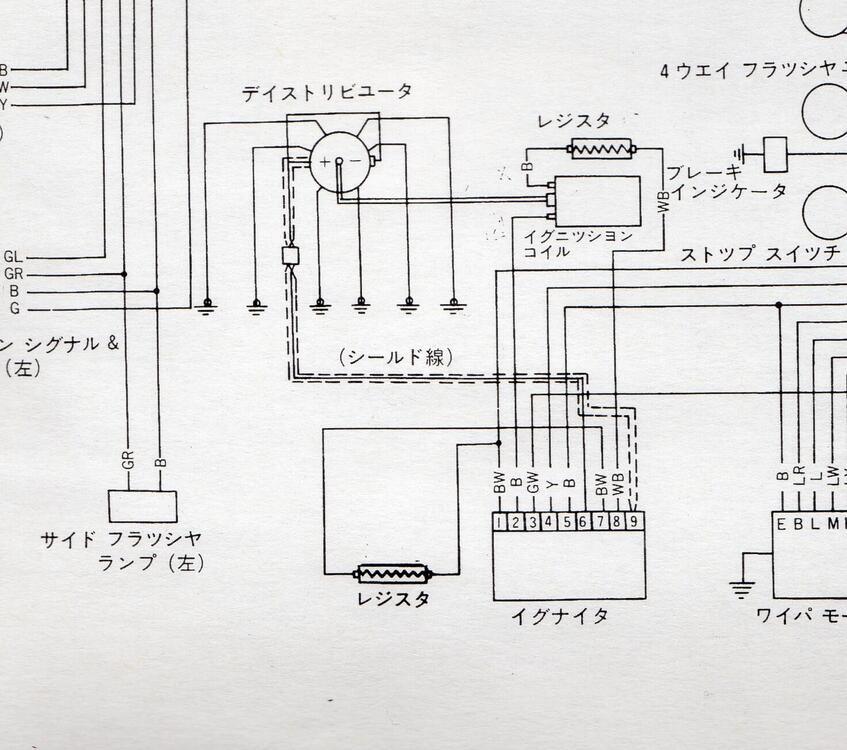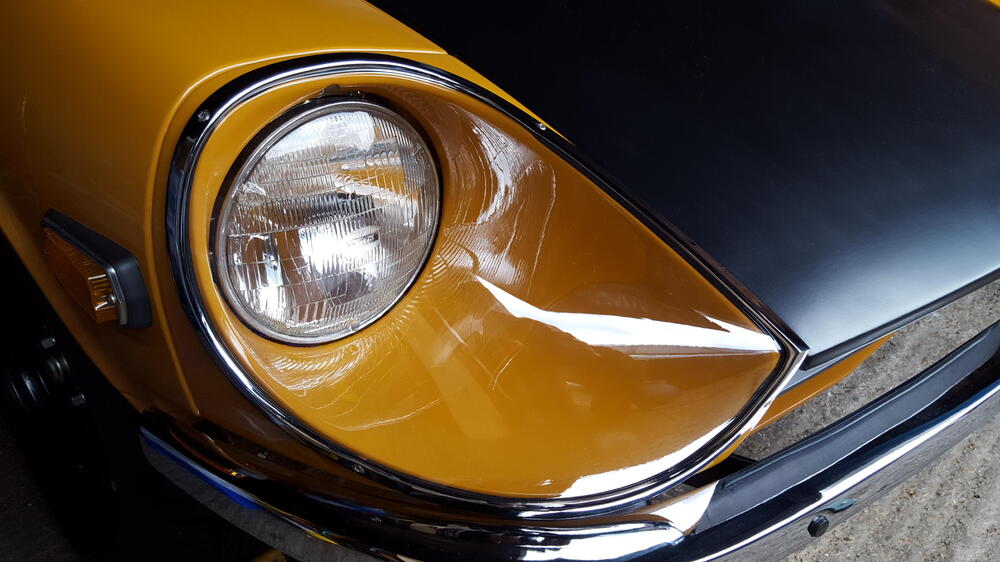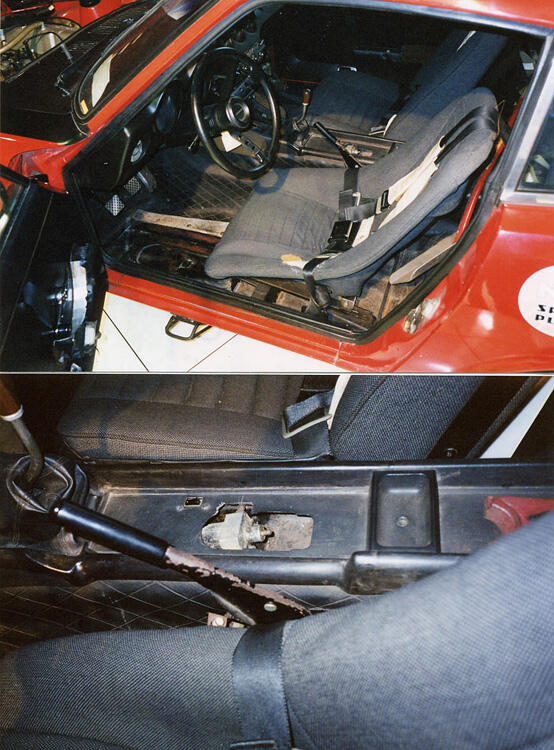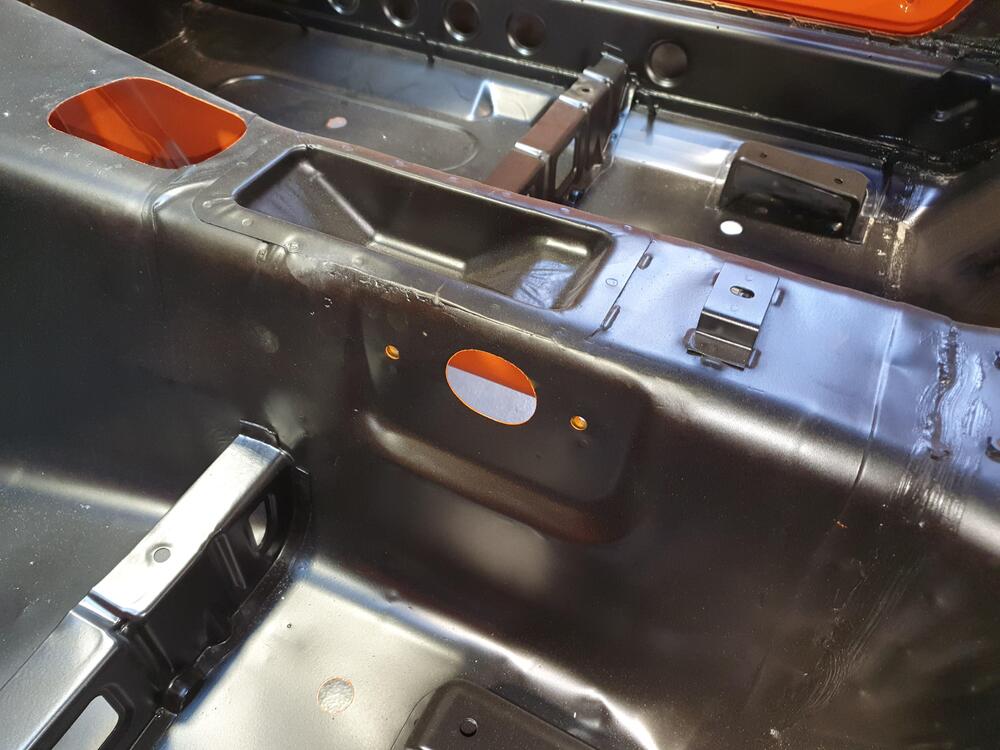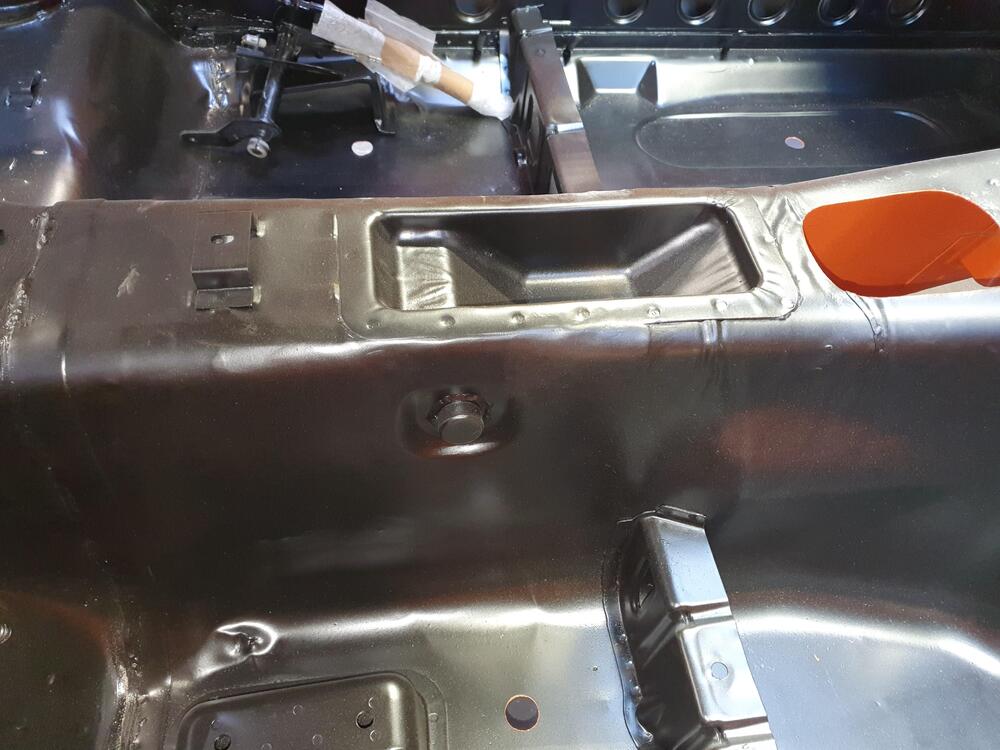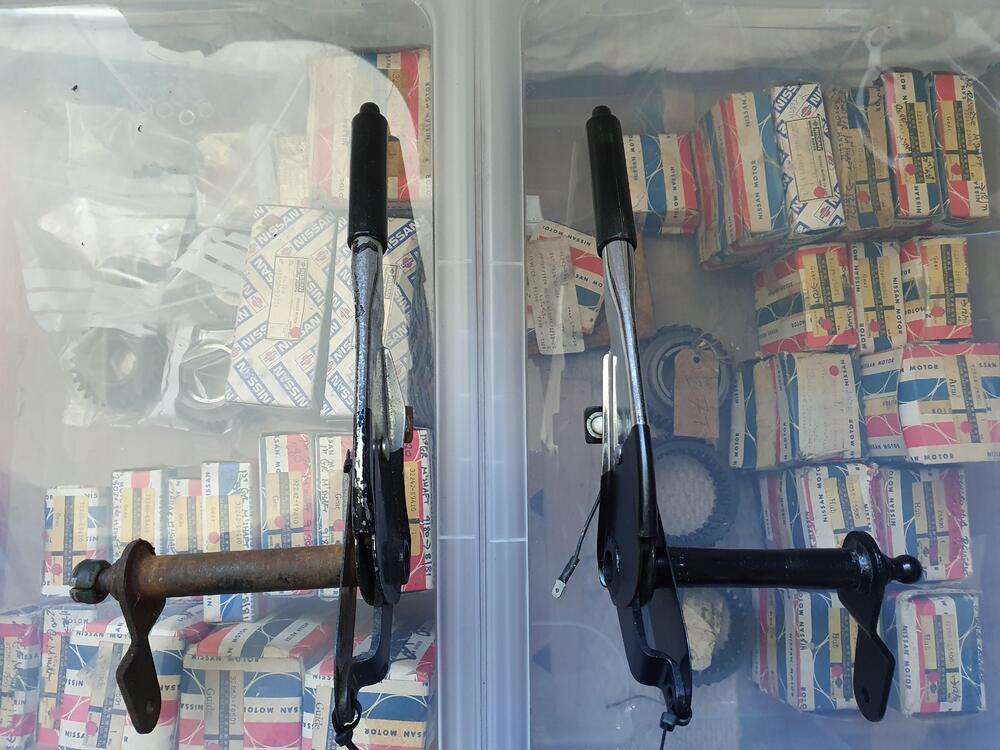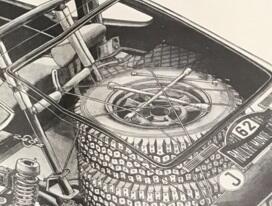Everything posted by HS30-H
-
Datsun-240z Vs Fairlady-z432
Judging on past performance, if it *did* get added to Zhome.com it would probably have a heavy amount of spin added to it - whether intentional or unintentional - to support a natural bias that is at once both unscientific and unscholarly. But the real tragedy of Zhome.com is that it amounts to 'Friendly Fire'. I still don't really understand why the concept of the S30-series Z 'family' of variants - at concept, then through design, engineering and production, and all of them influencing each other in one way or another - is so controversial, let alone abhorrent? This is not some kind of 'woke' re-writing of history, it is documented and demonstrable fact from the very top. But then, this is the mindset: ...and those quotes are all from discussions on this very forum, classiczcars.com Turtles. Turtles all the way down...
-
Datsun-240z Vs Fairlady-z432
Second resistor was sited up on the firewall, kind of hiding behind the washer bottle. If your car is missing it then I presume it was part of the switch to aftermarket CDI system over the factory (Mitsubishi) igniter unit? Here's a scan of the same section of the schematic from the 1969 factory manual, which should be more appropriate for your early 1970 car. Pin #1 on the CDI Igniter is different:
- Parts needed early 5 speed
-
Headlight cover install for cheaters
Thank you! That's very kind. However, that's pretty much the same type of fastener I have found local to me. They are not quite the same as the chromed JIS items, which have a far narrower 'cross', and that delightful JIS dot on the crown. There is at least one supplier in Japan with very good replicas of the OEM screws, but they are expensive. I was hoping to find an inexpensive local supply, but so far no luck.
-
Datsun-240z Vs Fairlady-z432
I just want to take a moment to quote this post, and say that the document - marked 'Secret', no less - which Kats obtained and showed us here some years ago, seems somewhat underappreciated. I think it is dynamite. Probably the single most telling piece of official documentation relating to the genesis of these cars I have ever seen. It is, in my opinion, something of a Rosetta Stone... It has it all. Dated 25th June 1969, and with a big 'Hi' stamp (for 'Himitsu'/Secret), it is titled ''270 Kei-sha C/# Dakoku Yōshiki', and it gives us the type designation, purpose, company department destination and actual identity of the first fourteen cars in the project to be given full chassis numbers. First of all, there's no 'Datsun 240Z', 'Fairlady Z', 'Fairlady Z432' etc etc here yet. We know that the project was nicknamed 'Maru Z' (Z in a circle cipher) and was given the internal project number '270 K.K.' ('270 Kaihatsu Kigou'), a glimpse of the terms being used within Nissan just before production. Personally I always wondered where the '240Z' name came from for the Export cars, as it doesn't seem to make much sense ('2400Z' or '2.4Z' might seem odd to us now, but they are certainly more logical) and I am convinced that the '270KK' project code is what actually inspired it. The '240Z' name was a late assignation, after 'Fairlady Z' was rejected for the Export cars. I think the '270' code inspired '240Z' when a name was required at short notice. Secondly, it shows us that - quite logically - 'S30-00001' was the first '270' project chassis to be given a full series identity. 'S30' was the designated series number and the S30-prefixed models of Fairlady Z and Fairlady Z-L were key parts of the family tree. This was how Nissan structured the variants of other models too; a good example would be the C10-series Skyline, where C10 was the series and C10-prefixed models were the building blocks for the structure of other variants in engineering and documentation. Thirdly, and I think this is particularly interesting, the second car to be given a number is described as being an 'HL270' variant. Naturally, with LHD exports being a key part of the whole project, we would expect this to be a North American market type variant. However, that does not seem to be the case. That 'HL270' designation would appear to show it as being a general export LHD variant. So 'HLS30-00001' looks to have been what we might call a 'Euro' LHD type variant. The third car is a 'P270' variant - the 'P' indicating the S20 twin cam engine - and it was given chassis number 'PS30-00001'. Fourth car, first of the 'Ichiji Seishi' cars and destined to be a 'Soko test' car, has an 'HL270U' designation. That 'U' suffix would - according to Nissan's usual habit - indicate a North American market type variant when applied to an 'HLS30' prefixed chassis number. This was 'HLS30-00002'. We then get 'S30-00002', given the designation '270C' (or is that '270L'?). Certainly there's a distinction between this car's designation and the designation of 'S30-00001'. I'm guessing that one is a Z-L (Deluxe) and one is a Z-S (Standard)? That fits with Nissan's modus operandi too. Or does it possibly indicate a factory AirCon car...? Seventh car to be given a number, and the 4th 'Seisan Shisaku' car, is an 'H270U' designated variant. That would mean RHD Export type, and it was 'HS30-00001'. Another 'Soko test' car. So there they are. The first fourteen numbered cars. We are extremely privileged to see a key internal planning document of this type (thank you Kats) and I would say it deserves a thread of its own, and a little more recognition.
-
Headlight cover install for cheaters
I used the same Rivnut technique when installing headlamp covers on my 1970 Fairlady Z-L based 432-R replica project car. I regard the Aluminium Rivnuts as sacrificial (it is easy to strip the threads) as they can be drilled out and replaced fairly easily. I added a little dab of two pack epoxy adhesive to mitigate any risk of spinning. I've found it hard to find the correct screws. The originals were - I believe - what's known as a 'Raised Head' JIS screw with a chrome finish. They are a countersunk design with a slightly domed head which look so much nicer than the common Philips and Pozi types in stainless. I'm still searching for a good supply as I have three cars with headlamp covers and no spare screws...
-
Headlight cover install for cheaters
My point being that E4100 would - normally - precede E4126, right? I think it is easy for us to get slightly lost within terms such as 'early' and 'late', even if they are useful terms. 'Early' doesn't necessarily mean earliest or first, for example. I have to admit that I'm still not convinced that a 'three screw' design ever existed in full production, and the E4100 type certainly seems to have been a four screw design as shown from the hardware count.
-
Headlight cover install for cheaters
Kats, What about the E4100 type? Post #95 here:
-
Datsun-240z Vs Fairlady-z432
If you scroll back up a few posts, you will see that Kats posted photos of some relevant pages from Nissan's 'Service Shuho' booklets, which described all the models available in Japan when published as well as major and minor changes and updates. The H-prefixed Japanese markets are included, and they were sold from the last quarter of 1971 through to the end of 1973 in Japan. HS30-S Fairlady 240Z HS30-D Fairlady 240Z-L HS30-H Fairlady 240ZG
-
Datsun-240z Vs Fairlady-z432
I certainly don't know of any exceptions. All the Works LHD 240Z rally cars that I'm aware of had the transposed handbrake lever position and a bias valve. This was eventually paired with a 'Fly Off' function for fast Special Stage starts and - later - hydraulic actuation. There were even double servo cars. Strong and effective hand brakes are still one of the black arts of fast rally driving. On the S30 its not that simple, as the whole mechanism needs to be mirror-imaged as well as the tunnel sheetmetal for the mounts. It also required custom a console. I've been replicating all this on my LHD Works car 'evocation'/'tribute' (or whatever it is...) and it takes some doing. Perhaps this is a clue as to why Nissan didn't go to the trouble of having two different handbrake/E-brake lever positions for the production cars.
-
JDM/option Footrest, differences.
Bravo Ian. Beautiful job! However, I reckon Nissan got it right with the respective footrest finishes. The chrome version is perfectly suited to the CSP311s mid Sixties charm and style, coordinating with the other brightwork in the cabin and on the dash, whereas the S30 has an altogether more muted, darker and business-like cabin ambience. They fit.
-
original jute material
Here is, perhaps, a reminder for us of the elasticity of the 'Series 1' term... I'm not a fan! Wasn't it only the very first (whatever that means...) few HLS30Us that were shipped without carpets and ended up getting the locally made versions? I have a 4/70 HLS30U and it certainly had factory-fitted carpet when new. The jute section in question looks like a factory piece to me (?). If it is, then I'd expect it to have - at least - the cut-outs for the possibility of a passenger foot rest bar in the same 'tits-on-a-bull' (pardon my French) way that the tar mat does on my 4/70 HLS30U. The cut-outs at the rear certainly look to be in the right place, and the right shape, to accommodate the Japanese market forward seat mounts. Plenty of other stuff on these cars is there only because they were designed with other variants in the mix, after all.
-
original jute material
Yes, I noticed the carpet section was LHD format but I was specifically addressing your question about the jute section next to it. Do you agree with my thoughts on the cut-outs in the rear end of the jute being there to accommodate the Japanese market forward seat mounts (and hence 'universal' jute pattern)?
-
original jute material
They look like they are to accommodate the Japanese market forward seat mounts. Below photo shows left (passenger) side floor of Japanese market RHD car:
-
original jute material
I believe that jute section is wrongly positioned. It appears to be upside down and back-to-front, if that makes sense. That long oblong cutaway at the front is for the Japanese market seat mounts, whilst the more square cutouts at the rear are for the passenger footrest bar mounts.
- Datsun-240z Vs Fairlady-z432
-
Datsun-240z Vs Fairlady-z432
Some of the details seen on artist Hosokawa san's cutaway are almost exactly the same as seen on '8D-420' for the Auto Sport January 1971 colour feature and fold-out poster. Note in particular the identical positioning of the wheel brace and jack spindle on top of the spare wheels, which seems unlikely to be replicated on a different day/car. Clearly Hosokawa san had access to the car, but also ended up having to 'guess' some of the details that he could not see/sketch/photograph, or which he perhaps forgot to note at the time. Myself and a couple of others have long scratched our heads about details like the missing/invisible exhaust manifold, the strange and truncated shape of the transmission, the too-square 100 litre fuel tank and the bizarre shape of the moustache bar, as well as what you have already pointed out. '985', being Aaltonen's car (their lead and star driver in the rally program) and also placing highest of the Works team cars in the '71 Monte, was an obvious choice to mock up for the magazine's cutaway poster. So, I think the cutaway is a composite of more than one car, with a few mistakes and omissions. There's a long thread on the Auto Sport (UK) Nostalgia Forum which documents and discusses the work of cutaway artists like Hosokawa san, and there are always many mistakes/omissions/anomalies to be pointed out. I think it is a hugely difficult task to draw one of these things and I'm in awe of the cutaway artists' skill, so I don't want to nitpick too much...
-
Fake Z for Japanese GT500 Race Series
Trolling? Remind yourself of the title you chose for this thread. "Fake Z..."? You seem to talk about race cars a lot, but I get the impression you don't know all that much about the world of motor racing. Yes, the cars taking part in Japan's Super GT series are nothing like what you can buy in the showroom. You seem dismayed, but also surprised? Bizarre.
-
Datsun-240z Vs Fairlady-z432
Glovebox base chalkings have become one of my first calls when I see one of these cars in person. Getting down on your hands and knees with your head in the passenger side footwell often requires an explanation to the owner... Clearly Nissan Shatai didn't really need to put much information - if at all - on North American market variant dashes during assembly (although that letter 'A' seems to pop up as above, as well as 'H'), but other LHD market variants certainly got their destination market chalked up either in 'Romaji' or Kana. So did export RHD markets. For the domestic market, Nissan Shatai noted the sub-variant type there (probably indicating content difference) so your 1970 Fairlady Z would have a chalk mark indicating that it was a 'Standard'/'Z-S'/'S' model rather than a 'Deluxe'/'Z-D'/'D' model. I've seen several variations for the same thing, so I wonder if it was an informal - rather than standardized - notation by the assembly line workers? I see 'S' and then '30', plus something else on yours that I can't make out. Frustrating!
-
Datsun-240z Vs Fairlady-z432
I'd be wary of using that particular car as any kind of textbook example. The vented quarters don't make sense in context with the rest of the bodyshell. In fact, the *opposite* scenario (ie, non-vented quarters on an otherwise 'airflow' type later bodyshell) would be less unusual in PZR terms. Many of the PZR-specific body pressings were made in batches and there were no vented type quarter pressings made for the PZR. There are examples of the early - solid/unvented - PZR quarters being cut to accept the vented quarter 'Z' emblems. Some of the work being carried out on that car has made me, and a few others, wince. I'd like to see such an important and rare car mounted on a Celette or equivalent type body jig fixture before he started unzipping any seams and spotwelds.
-
Datsun-240z Vs Fairlady-z432
Nothing to do with Nissan. The wishbone braces are a personal, aftermarket, addition 40+ years after the car was made. A 'TOR CO' moment for you, I'm afraid. Go and sit in the corner until the school bell rings.
-
Datsun-240z Vs Fairlady-z432
Something unique about PS30-SB rear suspension? It'll be news to Nissan too...
-
Datsun-240z Vs Fairlady-z432
The hex bolts (technically screws) that go through the four tubes are quite unusual in the Nissan Engineering Standard. Hard to find. Bear in mind that the Nissan factory option/Sports Option/Race Option 'Safety Bar' was subtly different than the versions used by the Works team. Vertical drop base mounts in particular.
-
Datsun-240z Vs Fairlady-z432
Still, it is only a hunch. The key point is that damage in testing was a distinct possibility, if not inevitable. We know '8D-420' was an early Works rally test car, and that it had been used fairly hard before and during the AUTO Sport magazine feature. After that it was clearly spruced up (and the black anti-dazzle paint added to the top front surfaces) before the DRIVER magazine feature. There might have been some haste involved.
-
Datsun-240z Vs Fairlady-z432
My thinking - and it is just a possibility, I have no evidence - is that because it was an early lightweight '240ZR' (featuring all the PZR lightweight tricks) it would have been fitted with the PZR type lightweight front fenders. I believe these required the side marker/repeater holes to be stamped out in a separate process, and it just may not have been done. I remember there being one or two instances of factory race cars like this. Australian market cars didn't have the holes stamped either, which perhaps shows us that it was indeed a separate process in the front fender manufacturing. Just a theory. I've seen evidence of hand-cutting features on other Works cars too. Yes, I saw it twice during the long restoration process. Amazing work by Ando san, and a real University diploma course in PZR-specific details for me. I have a huge amount of reference photos too. Fascinating stuff. I don't want to spoil the fun, so I'll keep quiet...







